Tools in the Toolbox: Physical Therapy is Not Just Exercise
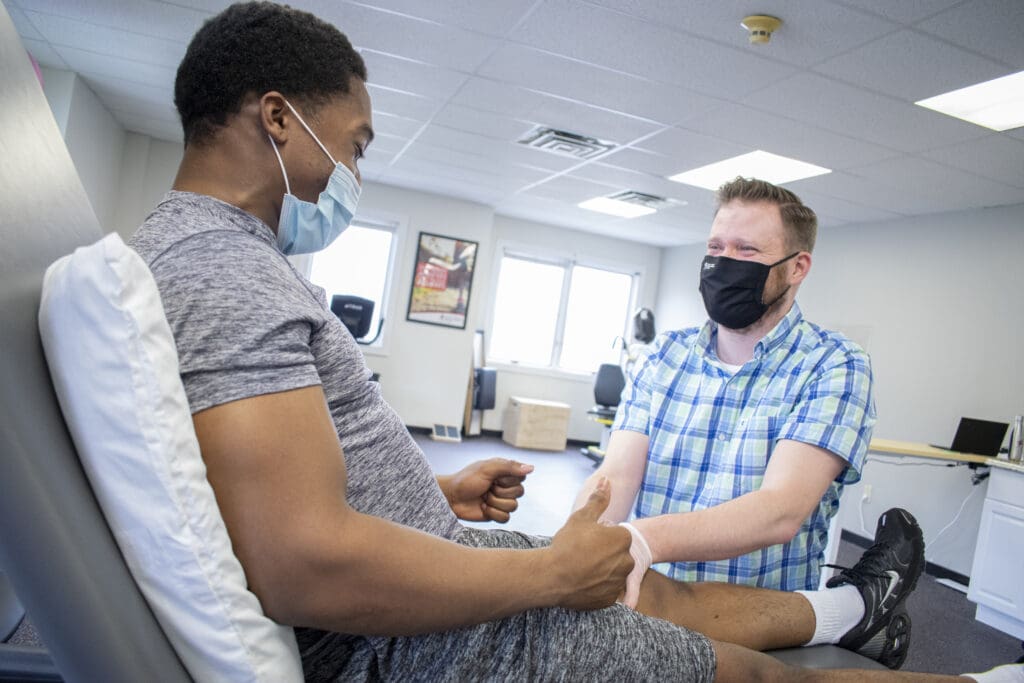
There are many misconceptions about physical therapy, one of which is that physical therapy just consists of exercises and stretches. The reality is that physical therapy is so much more than that!
Physical therapy addresses an ailment that causes pain and/or limits a person’s ability to move and perform activities of daily living. After a comprehensive examination to determine the cause of symptoms, physical therapists use a variety of tools to restore patients back to optimal health. Since every case is different, physical therapists use their expertise to determine which combination of tools works best for each patient.
Manual Therapy
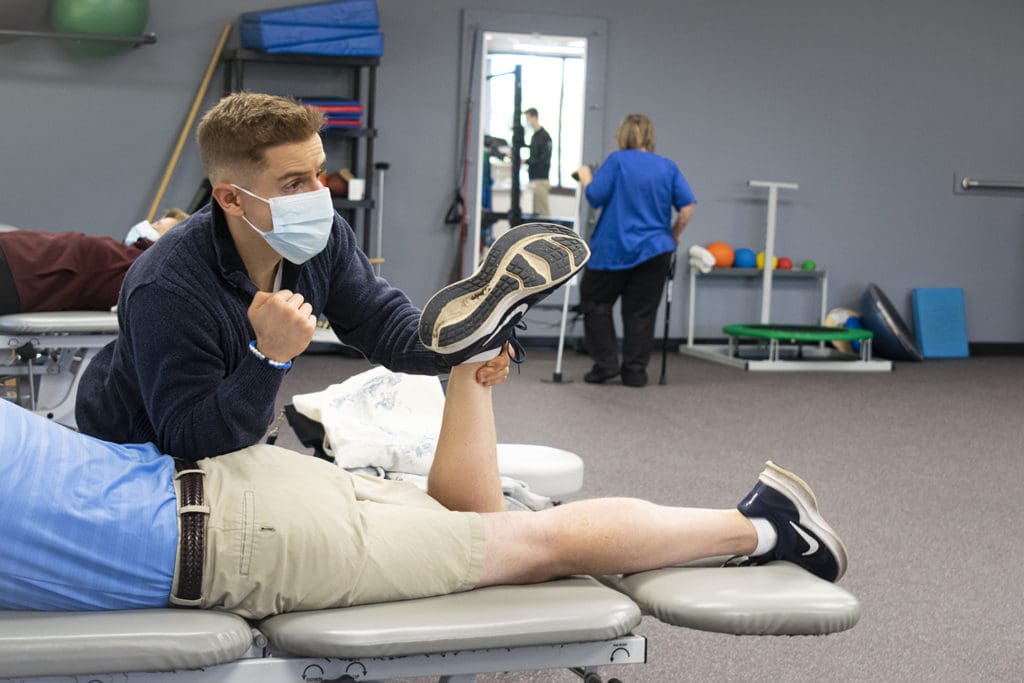
Also known as manipulative therapy, manual therapy is the use of skilled hand movements to manipulate soft tissue, joints, and nerves. More and more research suggests manual therapy plus exercise is more effective than exercise alone for a variety of diagnoses. This includes but is not limited to low back pain, neck pain, lateral elbow pain, and rotator cuff tendinopathies. There are numerous manual therapy techniques, including the following:
- Myofascial Release – “Fascial” refers to the connective tissues that covers and supports the muscles throughout your body. Fascia is naturally strong but flexible. When it becomes tight, it can lead to pain and loss of motion. Myofascial release involves a therapist targeting the muscle and fascial systems using gentle sustained pressure to break up stiff areas of fascial tissue, otherwise known as trigger points. This promotes increased flexibility and mobility.
- Soft Tissue Mobilization – After injury, your body recovers with an inflammation process that can result in long strands of collagenous scar tissue in the soft tissue, which can cause pain. Soft tissue mobilization involves the therapist applying firm, direct pressure to relax tight muscles and stretch tight fascial structures using a variety of techniques, including the use of tools.
- Joint Mobilization – Using small movements, a therapist manually moves a joint, gently working it through its natural level of resistance. This should be pain-free and guided by the patients’ feedback.
- Joint Manipulation – Similar to joint mobilization, except the therapist applies a high velocity, low amplitude (rapid force, short duration) thrust to the joint.
While manual therapy techniques are commonly used in physical therapy, they’re not suitable for everyone, specifically those with certain conditions. A physical therapist will be able to assess whether manual therapy is suitable and beneficial for you.
Instrument Assisted Soft Tissue Mobilization (IASTM)
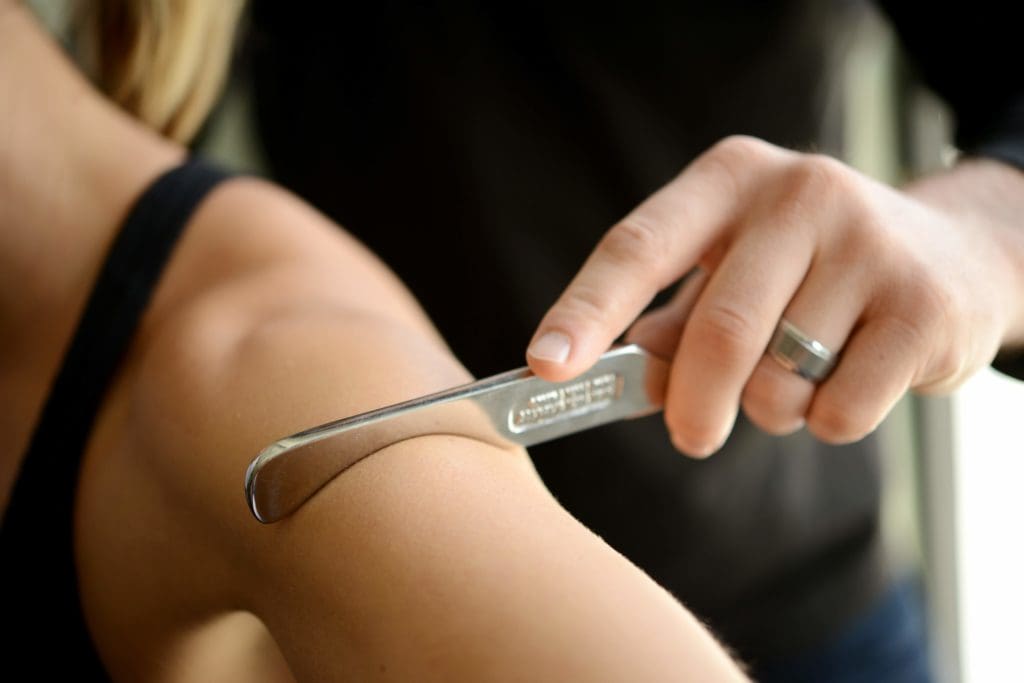
The IASTM technique is a type of manual therapy that uses a tool to perform soft tissue mobilization. The therapist applies firm pressure with the tool and glides it across an area of the body to assess for areas of scar tissue, soft tissue restrictions, or inflammation. These restrictions may be caused by surgery, overuse, prolonged postures, or lack of use.
It can be performed on a large or small area, and the therapist will use different tools, angles, and pressure for different purposes. The use of the tool causes microtrauma to the tissue to stimulate a local inflammatory response, which promotes reabsorption of unhealthy tissue, tissue remodeling, and healthy tissue production. This decreases pain and improves mobility.
Popular IASTM tools that we use in our clinics are the Graston Technique tools, which are stainless steel tools designed to locate muscle knots or restrictions.
Trigger Point Dry Needling
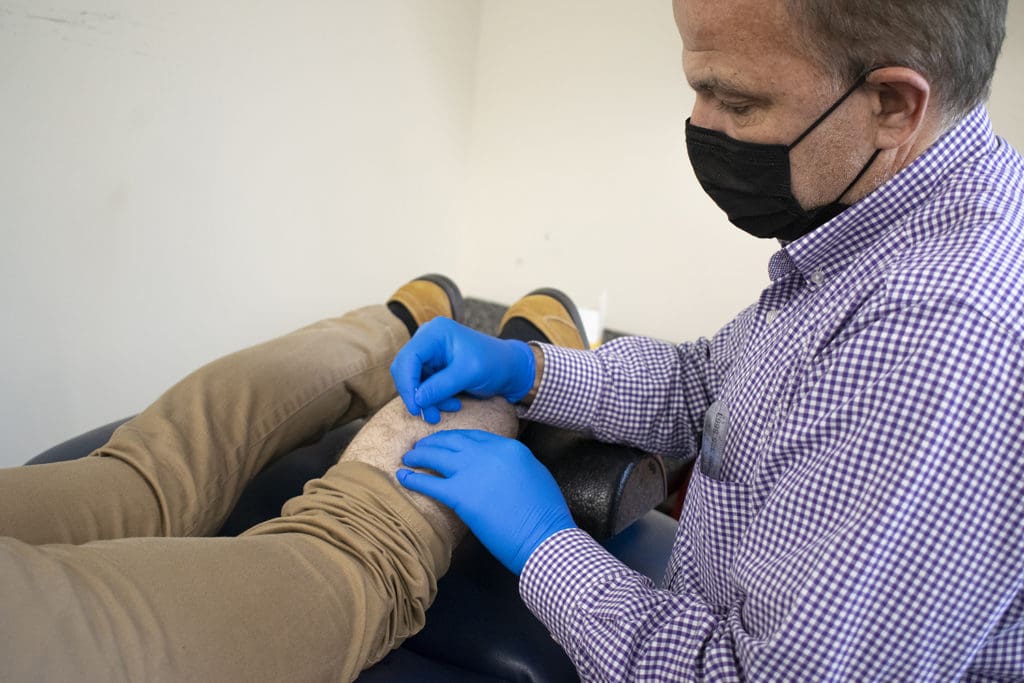
Trigger Point Dry Needling is a popular and effective treatment for musculoskeletal pain. First, a therapist will identify a trigger point that might be causing pain. Trigger points are knotted, tender areas that develop in your muscles. The trigger points can cause the muscles to get an inadequate blood supply, making the area more acidic.
Trigger point dry needling involves a physical therapist inserting a sterile monofilament needle into a myofascial trigger point. This helps draw normal blood supply back to the area and release tension, which helps resolve pain and stiffness and improve muscle function and flexibility.
While it’s not painful, you might feel slight discomfort during the needling. It can cause a twitch response, which is a good sign the muscle is responding to the needling. It’s important after the needling to keep moving and stretching.
Is this the same as acupuncture? No, Trigger Point Dry Needling is based on Western medical research and principles, whereas acupuncture is based on Traditional Chinese Medicine.
Blood Flow Restriction (BFR) Therapy
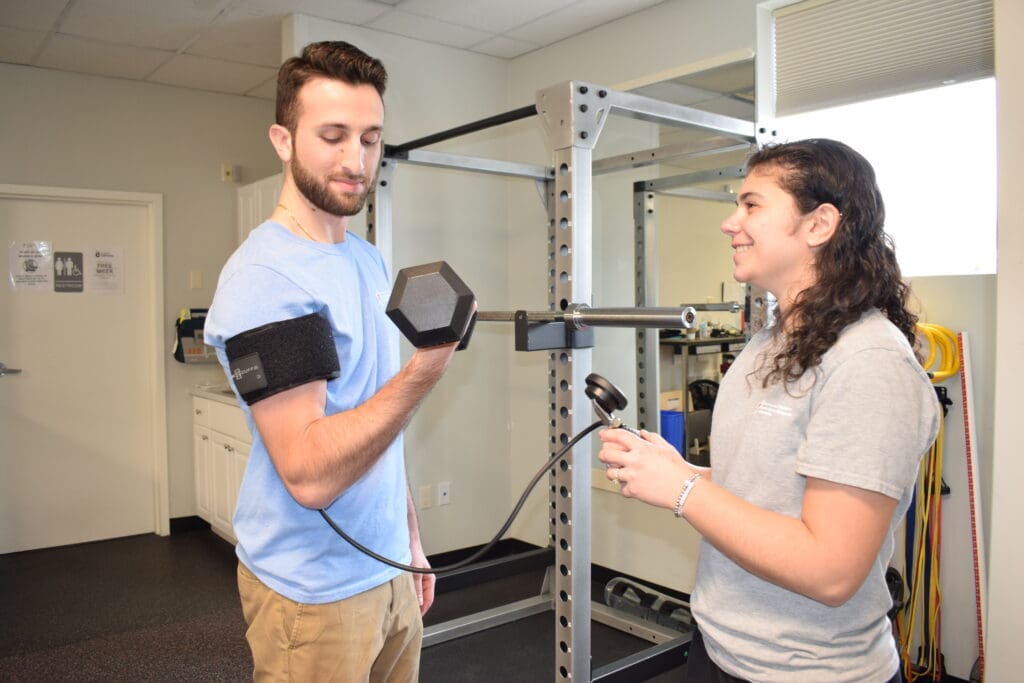
Blood flow restriction therapy, also known as occlusion training, is another trending technique that can help patients to make greater strength training gains while lifting lighter loads.
BFR involves partially restricting blood flow which results in an oxidized (low oxygen) environment in the muscles. This creates an environment similar to the environment that exists during a high intensity workout. Due to the perceived lower oxygen levels, the anterior pituitary gland responds by releasing growth hormone which helps with muscle cell reproduction and regeneration and lipolysis (fat breakdown).
This results in:
- Improved muscle strength
- Increased muscle hypertrophy
- Development of newer and healthier blood vessels
- Improved bone mineral density
This allows for reduction of stress placed on the limb while still seeing results. This works especially well for patients who cannot tolerate heavy loads, such as the elderly or those recovery from surgery.
While all of these techniques can be beneficial, they are rarely used alone. A physical therapist will determine which combination of tools will work best for you! Most of these are used in combination with exercises and stretches to help resolve pain and improve function.
